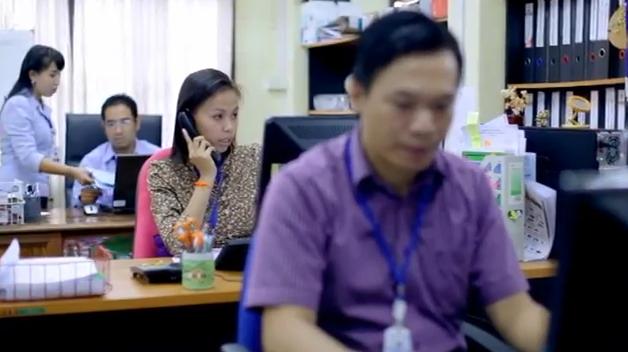Vientiane, July, 9, 2012--- Mr. Vilakone, who works for a company that produces coffee, was one of the Lao traders invited to the launch of a new electronic service by the Ministry of Industry and Commerce in June 22, 2012. The Lao PDR Trade Portal is no ordinary online platform--- it is a single authoritative source of all laws, regulations, and procedures for traders and government agencies involved in the import and export of goods.
“What I find most convenient about the Lao PDR Trade Portal is that information on all tariffs is now online,” he said, “It will help my business comply with international quality standards more easily, thanks to online information.”
The Lao PDR Trade Portal enables traders like Mr. Vilakone to cut down the number of trips needed to get information or the length of time for carrying out transactions. It’s described as the first step towards the ‘Lao National Single Window’ which will allow traders to discharge all import/export obligations through one channel electronically.
Lao PDR Trade Portal features
In a transition economy like Lao PDR’s, new firms are finding it difficult to get information on business processes. The private sector has identified the lack of transparency and predictability (the confidence that trade barriers aren’t raised arbitrarily) surrounding regulations as a major investment constraint.
Arnon Leolang, from Joint Development Bank, agrees that information is important: “The Lao PDR Trade Portal is a good initiative because people won’t need to know officials from different government ministries to move along the trade process. All traders will have access to the same information and data,” he said.
The website showcases the following:
• All trade-related laws, regulations, measures, restrictions and licensing requirements and tariffs indexed, cross-referenced, and searchable by commodity code;
• Detailed process maps of business procedures for importing and exporting;
• Full listings of national standards for products;
• Procedures for clearing goods at the border;
• Downloadable forms; and
• E-alerts which traders can customize to receive information on commodities.
“The creation of the Lao PDR Trade Portal is a key milestone in improving our country’s business environment,” said Dr. Nam Viyaket, Minister of Industry and Commerce, “The Seventh National Social and Economic Development Plan (2011-2015) identifies trade information services as one of its priority areas. If we want to take part in international regional trade and production networks we have to move swiftly towards paperless transactions,”
Fulfilling trade commitments with WTO, ASEAN
The Lao PDR Trade Portal is also helping Lao PDR comply with its WTO accession commitment that requires member countries to make their trade-related regulations available to the public in an easily accessible manner. It does this through the website’s SPS Enquiry Point page (for issues related to sanitary and phytosanitary measures) and the TBT Enquiry Point page (for enquiries about technical standards covered by WTO agreements). It is likewise helping Lao PDR meet its commitment to ASEAN by providing trade related information and services for the future ASEAN Trade Repository.

